|
Kabuto ("samurai helmet") opened in May 2012, well off The Strip (a 15 minute cab ride away) in a strip-mall in the Chinatown area with a few other restaurants. It has a tiny sign so is not easy to see from the road, located in between an Italian restaurant and a massage parlour. It is actually in the same block as the Japanese grill restaurant Aburiya Raku. The original head chef Genichi Mizoguch left in mid 2014 to set up his own establishment. The current head chef is Ken Hosok, previously sous chef here. The dining room has a traditional cyprus wood counter seating eight, with two additional tables and a private room next to the sushi counter, seating 22 diners in all. You can have an omakase experience of differing numbers of courses, priced at either $40, $80 or $120. You can also order individual pieces of fish. The meal described here is the lengthiest omakase option. Obviously there is not a lot of top quality fish to be found in the desert, but there are plenty of flights to Las Vegas, and Kabuto gets deliveries up to six days a week from suppliers in Los Angeles and elsewhere, the fish coming partly from Japan (Tsukiji market), and some from the USA. Incidentally, it is a myth that your sushi restaurant should always be on the coast and serve its fish fresh. Pretty much all sushi is frozen in order to kill parasites, and in the US freezing fish for sushi is actually a legal requirement (at or below -31 degrees for a minimum of 15 hours in order to kill of parasitic growth) with a couple of exceptions for fish that are less susceptible to bacteria such as tuna, which is anyhow usually frozen on the fishing boat. Even at Tsukiji market in at Tokyo virtually all tuna is frozen; I saw just a couple of fresh specimens, caught off the Japanese coast, when I visited. A visit to the small, quirky but fascinating parasite museum in Tokyo (including a 29 foot long tapeworm extracted from the intestines of a Yokohama resident) will soon convince you that having your sushi frozen prior to serving is a wise move. There were a few wines without vintages listed (eg Cristom Pinot Noir at $65 for a bottle that retails at about $45), as well as a reasonable selection of sake, but I drank beer. The menu began with a sashimi stage. Shad was served on a bed of pickled ginger, along with marinated akami (lean) tuna with pickled cucumber and what was claimed to be fresh wasabi. Perhaps it was (there were no wasabi roots to be seen), but it did not have the silky texture of high quality wasabi that you encounter in Japan. The shad was fine and the tuna was pleasant, in this case a fish caught off the coast of Spain (14/20). This was followed by yellowtail, flathead from Fukuoka, snapper from Japan, scallop from Boston and seared Spanish mackerel. The scallop was delivered live though the flavour was not dazzling to be honest, but the flathead and snapper were of good quality (14/20, more for the snapper). There was then a plate of grilled fish. Seared toro tuna was not great, a princess sea snail interesting though very salty, excellent sea bream with miso, flying fish served just with salt and striped snapper with sesame sauce. Other than the bream these seemed to me quite ordinary (13/20 average). The sushi stage of the meal now began, the rice from Japan and prepared with only light use of vinegar. Baby sea bass was followed by red snapper from the south of Japan, then velvety akami tuna (this one from Japan) and jack mackerel (14/20), Of the tuna, chutoro was the star cut, having excellent flavour and silky texture, the otoro also very good (15/20). Then came a bowl of salmon roe, Hokkaido sea urchin and then anago (sea eel). The sea urchin was very good (14/20), the eel less so, its texture a little mushy (12/20). Tamago (sweet egg omelette) is traditionally the last thing served in a sushi restaurant, and here the chefs take it in turns to make it. I must have been here a night when somebody inexperienced was doing it, because it was not rather poor, the texture much too firm (11/20). At Kabuto tradition was not strictly followed and a few more things were offered. I had some more akami tuna, kamashita (collar, another fatty cut) and also the "triangle" cut, a fatty cut of the tuna similar to otoro, and a final hand roll of tuna. There was also a somewhat thin miso soup. The meal concluded with a pleasant raspberry sorbet (13/20). Service was very good, my sushi chef originally from near Mount Fuji and having trained in Japan. The bill, with just water and beer to drink, came to $161 (£103). Overall, Kabuto was a very enjoyable experience, and certainly a pleasant change from the rip-off celebrity chef bistros that infest Las Vegas. It was a long way from the sushi experience that you will find in Tokyo though, even in a mid-range place, and the attention to detail was at times lacking e.g. the disappointing tamago, the ordinary wasabi. If you had the mid-priced omakase option then a typical cost with drinks might be around £85 a head. |

Kabuto
5040 W Spring Mountain Road, Las Vegas, 89146, United States
- Map
- +1 702-676-1044
- Restaurant website
-
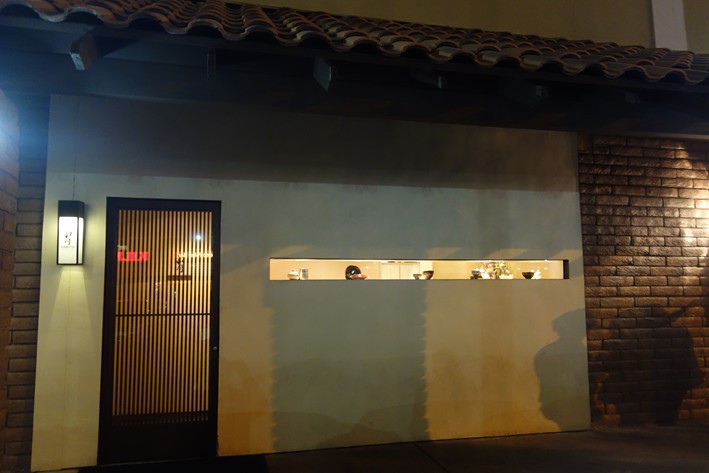 outside
outside

-
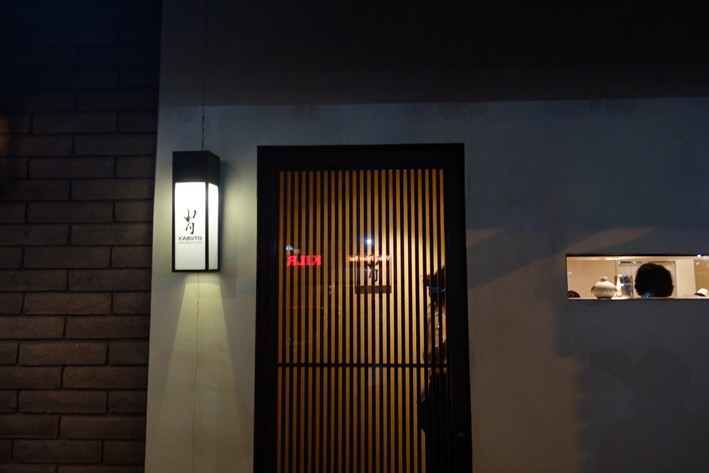 sign
sign

-
 flower display
flower display

-
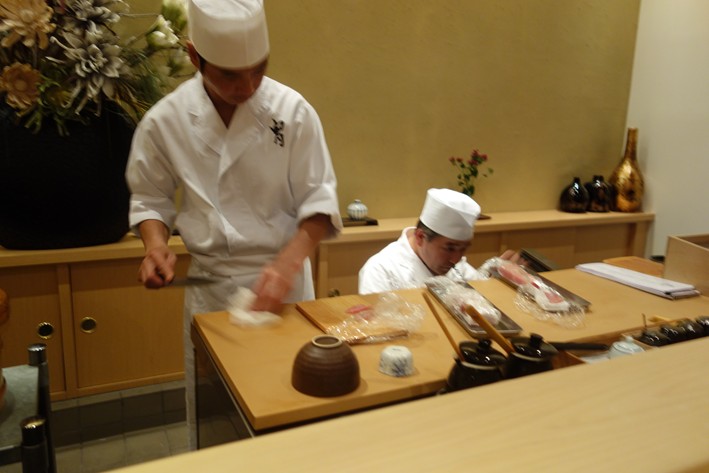 chefs at work
chefs at work

-
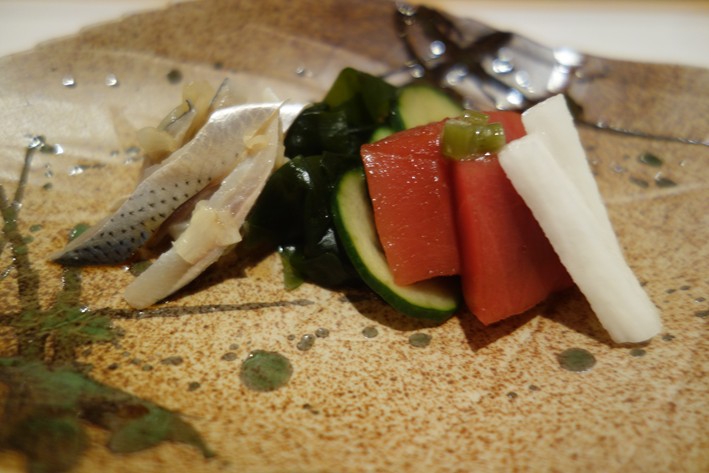 sashimi of shad and tuna
sashimi of shad and tuna

-
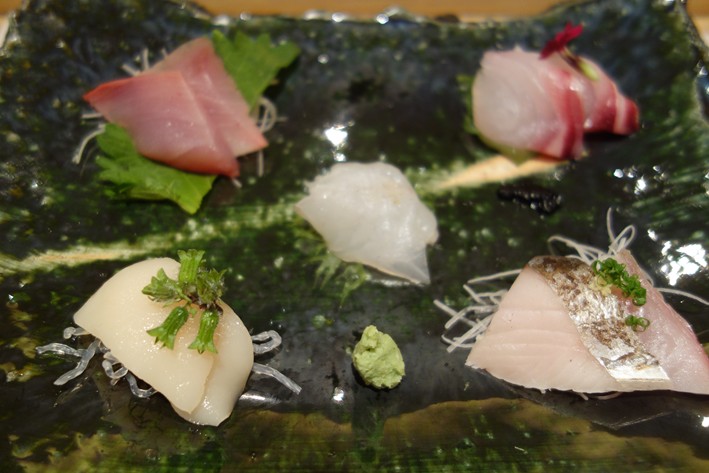 mixed sashimi
mixed sashimi

-
 cooked fish
cooked fish

-
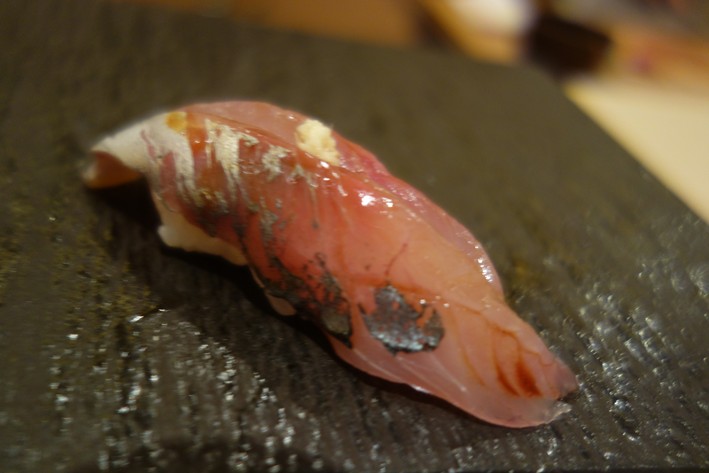 jack mackerel sushi
jack mackerel sushi

-
 akami tuna sushi
akami tuna sushi

-
 chutoro sushi
chutoro sushi

-
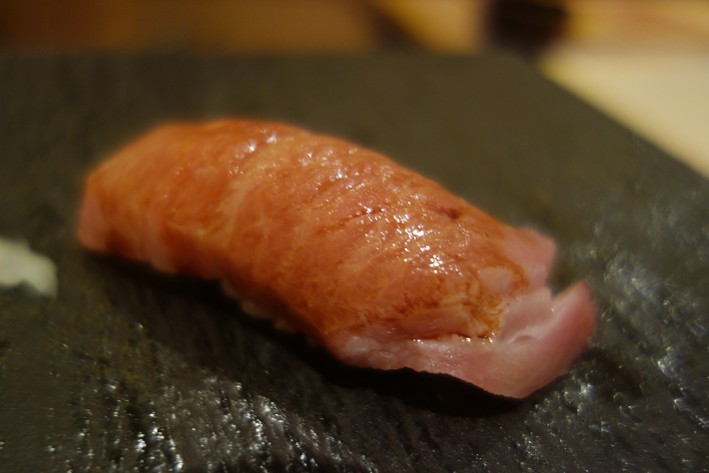 toro sushi
toro sushi

-
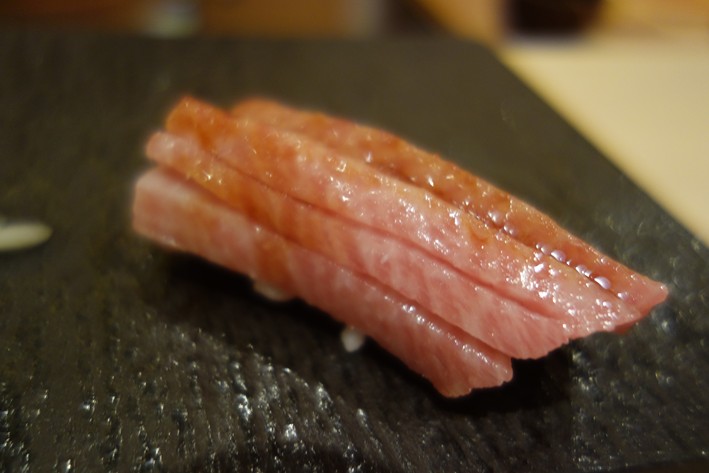 kamashita tuna
kamashita tuna

-
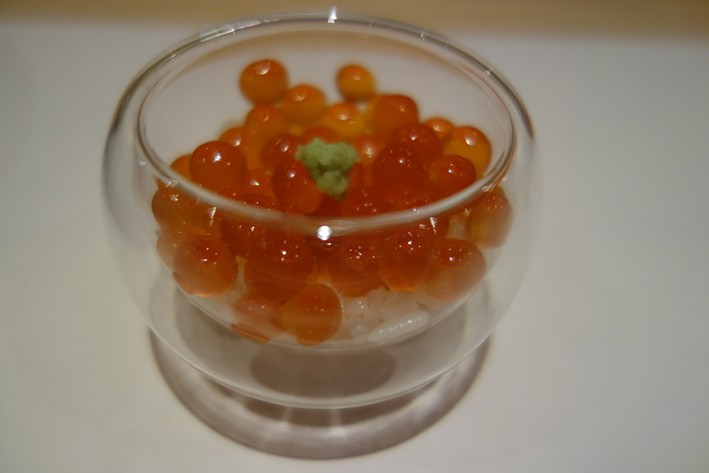 salmon roe
salmon roe

-
 sea bass sushi
sea bass sushi

-
 snapper sushi
snapper sushi

-
 sea urchin
sea urchin

-
 raspberry sorbet
raspberry sorbet

-
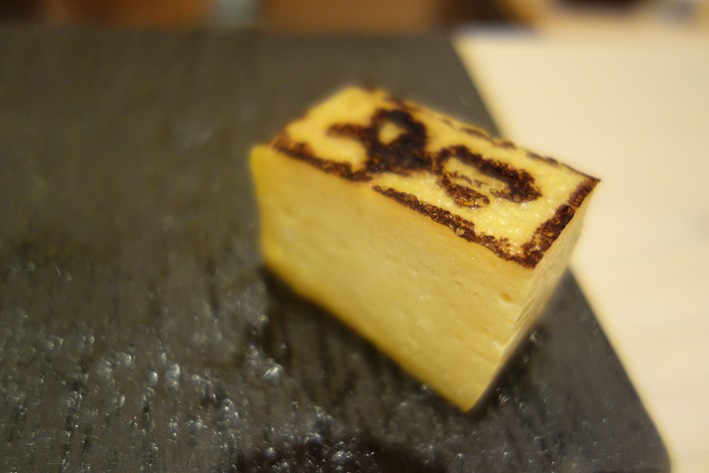 tomago
tomago

-
 final akami sushi
final akami sushi

Japanese cuisine
 Average Price £65
Price I paid £103
Value for money
££££££
Overall rating 14/20
Average Price £65
Price I paid £103
Value for money
££££££
Overall rating 14/20

The type of cuisine served at this restaurant
Typical price for three courses and modest wine
What I actually paid on this particular visit
Calculated from overall rating/average price: £££££ is best, £ least good
Score for the food from 1 to 20, with 20 being world class




















Add a comment
Thank you for submitting your comment, this will be checked and added to the website very soon.
User comments